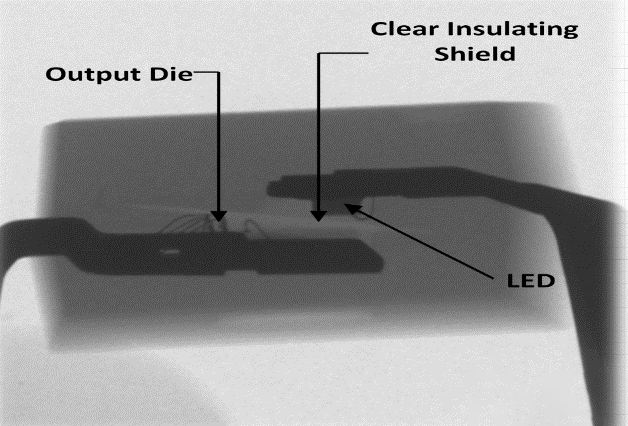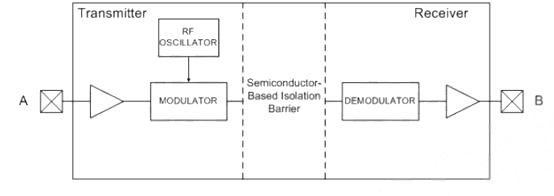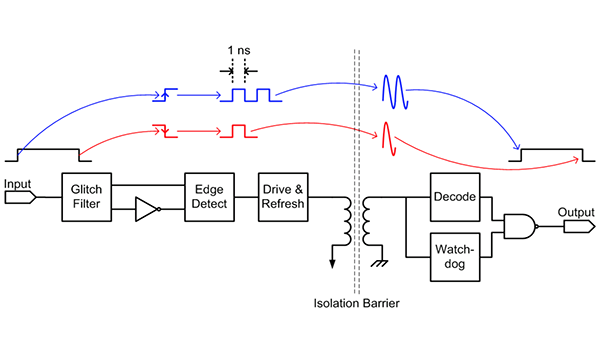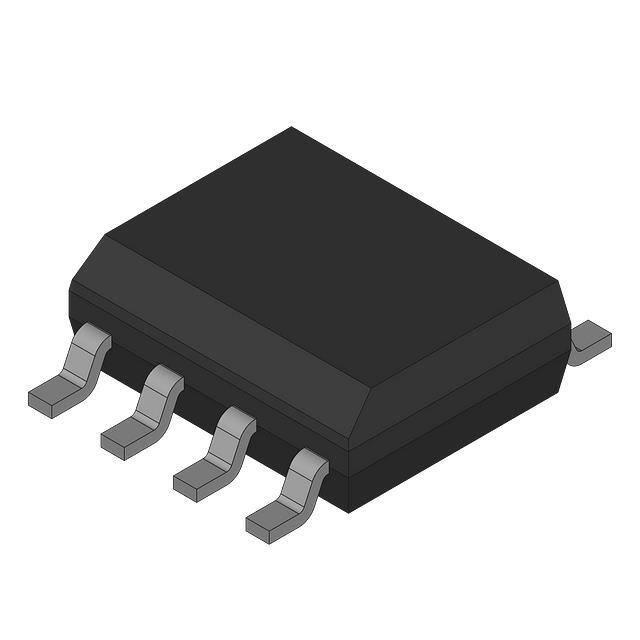Digital Isolator Technology Beyond Optocouplers
Digital isolators are electronic devices that use non-conductive media such as light, magnetism, or capacitance to transmit digital signals to achieve electrical isolation between different circuits. They have the functions of protecting sensitive circuits, preventing interference, signal conversion, and improving system reliability. Designers introduce isolation to meet safety regulations or reduce noise from ground loops.
While optocouplers are undoubtedly effective in achieving their purpose, further exploration of isolation technology may lead to a solution that better suits your application needs and resonates with elegance and ingenuity.
What is an Optocoupler?
An optocoupler, also known as an optoisolator, is an important solution for achieving galvanic isolation in digital systems. Its basic structure consists of an LED, an insulating barrier, and a light-sensitive semiconductor device (usually a photodiode or phototransistor). The principle behind an optocoupler involves using light to transmit a signal across an isolation barrier, thereby eliminating the need for a direct electrical connection between the input and output circuits.

Galvanic Isolation: Purpose and Method
Galvanic isolation is the cornerstone of ensuring the safety, reliability, and efficiency of electronic systems. Its purpose is to prevent unwanted currents and voltages from passing between interconnected circuits, thereby preventing potential hazards and signal distortion. Traditionally, galvanic isolation of AC signals has been relatively simple to achieve using methods such as transformer coupling, capacitor coupling, and electromagnetic radiation.
While optocouplers have proven their effectiveness in numerous applications, they also have significant advantages and disadvantages that are worth considering.
Advantages of optocouplers:
Effective galvanic isolation: Optocouplers provide reliable isolation between input and output circuits, ensuring the integrity of signal transmission.
Simplified circuit design: By eliminating the need for direct electrical connections, optocouplers simplify circuit design and reduce complexity.
Wide range of applications: Optocouplers are used in various industries such as automotive, industrial automation, and telecommunications due to their versatility and compatibility.
Disadvantages of optocouplers:
High LED current requirements: Optocouplers require a large amount of LED current, especially when the input signal is at a logic high level, resulting in poor power utilization.
Reliability issues: Optocouplers may experience reliability issues such as LED failure, interface contamination, and thermomechanical stress, which can affect long-term performance.
Propagation delay: The inherent operational delay of optocouplers imposes restrictions on data transmission rates, which may limit their suitability for high-speed applications.
Interface Complexity: Optocoupler interfaces deviate from standard logic gates, requiring additional components or design effort to effectively integrate them into system architectures.
Manufacturing Limitations: Optocoupler manufacturing techniques often hinder the integration of multiple channels within the same package, limiting scalability and flexibility.
Challenges arise when dealing with digital signals that exhibit stable logic levels for long periods of time. In such cases, traditional approaches prove inadequate and alternative isolation technologies need to be explored.
RF Approaches
Innovations in digital isolator technology have driven the development of radio frequency (RF) approaches as an alternative to optocouplers. RF isolators utilize modulation techniques to transmit digital signals across the isolation barrier, offering several advantages over traditional optocouplers.

By modulating a carrier signal based on a digital input, RF isolators transmit RF signals only when the input is at a logic high level, minimizing power consumption. This on-off keying modulation ensures efficient use of energy resources, making RF isolators particularly suitable for low-power electronic systems.
In addition, RF isolator devices, such as the Si864x family, offer superior performance and low electromagnetic interference (EMI) operation. These advances address issues related to power efficiency and signal integrity, positioning RF isolators as a viable alternative to optocouplers in modern electronic applications.
Magnetic Isolation
Another promising approach in digital isolator technology involves magnetic isolation, exemplified by devices featuring iCoupler technology. Magnetic isolators overcome the limitations of optocouplers by utilizing tiny transformers and control circuitry to facilitate the transmission of low-frequency digital signals across an isolation barrier.
The principle behind magnetic isolation revolves around inducing current through a changing magnetic field, allowing digital signals to be transmitted without a direct electrical connection. This innovative approach offers advantages in size, operating frequency, and power consumption over traditional optocouplers.

For example, iCoupler technology provides highly efficient galvanic isolation while minimizing power consumption and maximizing signal integrity. Although more sensitive to magnetic interference than RF isolators, magnetic isolators offer compelling advantages in applications where size, efficiency, and reliability are critical.
What is the difference between optocouplers and digital isolators?
The differences between optocouplers and digital isolators are mainly reflected in the following aspects:
1.Working principle
Optocoupler: The electrical signal is converted into an optical signal through a light-emitting diode. After the optical signal passes through the isolation medium, it is received by a photosensitive element such as a photodiode or a phototransistor and converted back into an electrical signal, thereby realizing electrical isolation between the input and output sides.
Digital isolator: The input digital signal is transmitted to the output end through high-frequency modulation and coupling technology by means of transformer coupling, capacitive coupling or magnetic coupling to achieve electrical isolation.
2.Performance characteristics
Data transmission rate: The data transmission rate of optocouplers is usually low, generally less than 1Mbps; digital isolators can provide higher data transmission rates, usually exceeding several Gbps, which can meet the needs of high-speed data communication.
Power consumption: The light-emitting diode in the optocoupler requires a certain current drive, and the power consumption is relatively high; the power consumption of digital isolators is lower at high-speed switching, especially digital isolators using capacitive coupling.
Temperature characteristics: Optocouplers can operate in a wide temperature range, but the performance of light-emitting diodes may decrease at high temperatures; digital isolators are based on CMOS technology, and their performance may be affected at extreme temperatures.
Electromagnetic compatibility: Optocouplers have strong anti-interference and good electromagnetic compatibility in optical signal transmission; digital isolators may need additional design to meet electromagnetic compatibility requirements.
Reliability and stability: The simple light-to-electric conversion mechanism of optocouplers makes them more stable in various environments, but there is a light decay problem in long-term use; digital isolators do not have LED light decay problems and often have longer service life.
3.Application scenarios
Optocouplers: Commonly used in applications with low data rates and high isolation voltage requirements, such as power control, signal indication, high-voltage motor drives, inverters, etc.
Digital isolators: Suitable for applications that require high-speed data transmission and low power consumption, such as high-speed data acquisition and control in industrial automation, battery management systems and communication networks in automotive electronics, etc.
4.Cost and size
Cost: Optocouplers may be more expensive due to their relatively complex mechanical structure; digital isolators are highly integrated and usually have lower costs.
Size: Optocouplers are generally larger; digital isolators have smaller packages and are easier to integrate into integrated circuit and system-on-chip designs
In summary, digital isolator technology represents a significant advancement over traditional optocouplers, providing higher performance, reliability, and efficiency in achieving galvanic isolation. In particular, RF and magnetic isolation methods have emerged as promising alternatives that address the limitations associated with optocouplers while meeting the needs of modern electronic systems.
As electronic devices continue to evolve, the adoption of digital isolators is set to accelerate, driving innovation and enhancing safety and functionality in a variety of applications across industries. By understanding the purpose, approach, advantages, and disadvantages of digital isolator technology, engineers and designers can make informed decisions to optimize system performance and reliability.


